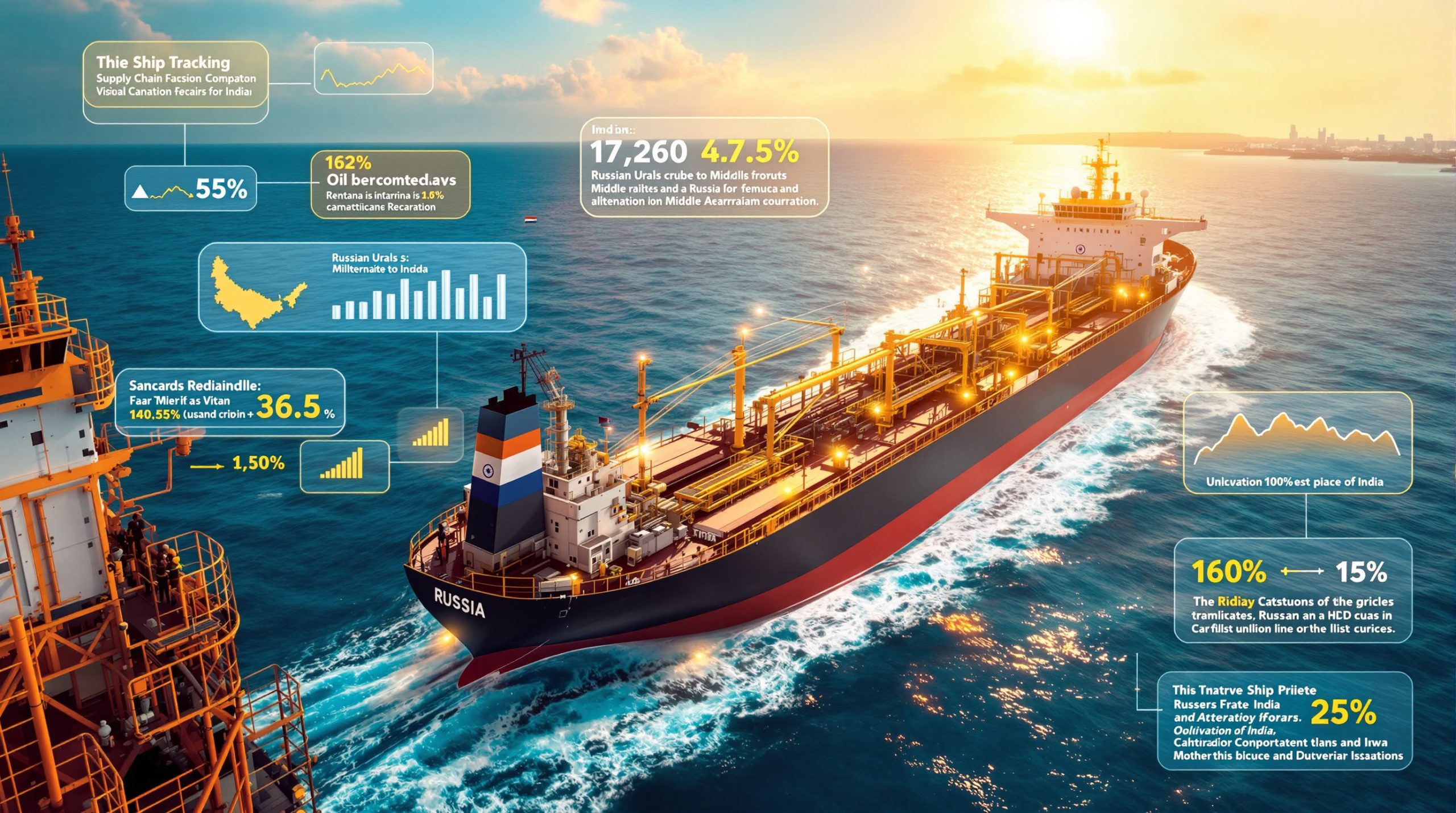America's Strategic Mineral Framework for Economic Security
The United States faces unprecedented challenges in securing reliable access to essential raw materials that form the backbone of modern industry. From semiconductor manufacturing to defense systems, the nation's economic stability increasingly depends on minerals sourced from geopolitically unstable regions. The final 2025 list of critical minerals, published by the U.S. Geological Survey through the Department of the Interior, addresses these vulnerabilities by identifying 60 minerals essential to national security and economic resilience.
This comprehensive assessment reveals how global supply chain disruptions have exposed critical dependencies that threaten both industrial competitiveness and national defense capabilities. Furthermore, the evaluation process incorporates quantitative risk analysis alongside stakeholder feedback, creating a data-driven framework for strategic resource planning.
Critical Mineral Assessment Methodology
The USGS employs a sophisticated evaluation framework that analyzes multiple risk dimensions to determine mineral criticality. This systematic approach examines supply chain vulnerabilities through both quantitative metrics and qualitative assessments, ensuring comprehensive coverage of potential disruption scenarios.
Assessment Criteria Framework:
- Import Dependence Analysis: Measures the percentage of domestic consumption reliant on foreign sources
- Supply Concentration Evaluation: Assesses geographic concentration of global production capacity
- Economic Impact Assessment: Quantifies GDP sectors dependent on mineral availability
- Substitutability Analysis: Evaluates availability and cost-effectiveness of alternative materials
- Strategic Reserve Adequacy: Reviews stockpile levels relative to consumption patterns
Geographic risk evaluation plays a central role in determining mineral criticality. Nations with concentrated production capacity create single points of failure that can disrupt entire industrial ecosystems. However, the assessment framework recognizes that geopolitical stability of producing regions directly impacts supply chain security, influencing both short-term investment planning and long-term strategic antimony investment considerations.
The methodology incorporates feedback from industry stakeholders, government agencies, and academic institutions to ensure comprehensive perspective integration. Consequently, this multi-source approach enhances the accuracy of criticality designations while accommodating diverse viewpoint considerations.
Ten Strategic Additions to the 2025 Critical Minerals Portfolio
The final 2025 list of critical minerals expanded significantly with ten new additions that reflect evolving technological demands and supply chain vulnerabilities. These minerals represent strategic priorities across defense, energy, and technology sectors, each facing unique supply challenges.
Strategic Metal Classifications:
Copper emerges as critical due to infrastructure electrification demands driving unprecedented consumption growth. Electric vehicle adoption, renewable energy installations, and grid modernization projects require substantial copper quantities, creating supply pressure on existing production capacity.
Metallurgical Coal maintains strategic importance despite decarbonization trends, remaining essential for steel production processes. Industrial applications require specific coal grades with limited geographic availability, creating supply concentration risks.
Uranium gains critical status as nuclear energy experiences renaissance conditions globally. Advanced reactor technologies and small modular reactor deployment drive uranium demand while production remains concentrated in few countries, contributing to uranium market volatility.
Silver transcends precious metal classification through expanding industrial applications. Solar panel manufacturing, electronics production, and antimicrobial applications create industrial demand that supplements traditional investment demand.
Additional Strategic Minerals:
- Phosphate: Agricultural productivity dependencies create food security implications
- Potash: Fertilizer production requirements link to national food security priorities
- Rhenium: Aerospace engine applications with extremely limited global production
- Silicon: Semiconductor manufacturing foundation for digital economy infrastructure
- Lead: Energy storage systems require substantial quantities for battery applications
- Boron: Advanced materials and nuclear applications with specialized demand profiles
The complete final 2025 list of critical minerals encompasses 60 materials: aluminum, antimony, arsenic, barite, beryllium, bismuth, boron, cerium, cesium, chromium, cobalt, copper, dysprosium, erbium, europium, fluorspar, gadolinium, gallium, germanium, graphite, hafnium, holmium, indium, iridium, lanthanum, lead, lithium, lutetium, magnesium, manganese, metallurgical coal, neodymium, nickel, niobium, palladium, phosphate, platinum, potash, praseodymium, rhenium, rhodium, rubidium, ruthenium, samarium, scandium, silicon, silver, tantalum, tellurium, terbium, thulium, tin, titanium, tungsten, uranium, vanadium, ytterbium, yttrium, zinc, and zirconium.
Industrial Sectors Facing Maximum Supply Chain Exposure
Multiple industries demonstrate significant vulnerability to critical mineral supply disruptions, with technology, defense, and clean energy sectors experiencing the highest risk exposure levels. These industries rely on materials with concentrated production sources and limited substitution options.
Technology Sector Dependencies
Electronic device manufacturing requires rare earth elements concentrated in specific geographic regions with limited alternative sourcing options. Semiconductor production demands ultra-pure materials with complex processing requirements, creating multiple potential disruption points throughout supply chains.
Smartphone production alone requires over 30 different critical minerals, from lithium for batteries to tantalum for capacitors. Supply chain disruptions in any single mineral can halt entire production lines, demonstrating the interconnected nature of technology manufacturing.
Defense and Aerospace Critical Requirements
Military equipment manufacturing relies on specialized alloys containing critical elements with few available substitutes. Aircraft engine production requires superalloys incorporating rhenium, tungsten, and other strategic materials often sourced from geopolitically sensitive regions.
Advanced weapons systems utilize rare earth permanent magnets for guidance systems, creating dependencies on materials dominated by single-country production. Defense contractors increasingly recognize these vulnerabilities as national security concerns requiring strategic mitigation approaches.
Clean Energy Transition Material Demands
Renewable energy infrastructure requires massive quantities of critical minerals experiencing explosive demand growth. Solar panel manufacturing consumes significant silver quantities while wind turbine generators require neodymium and dysprosium for permanent magnets.
Electric vehicle adoption accelerates competition for lithium, cobalt, and nickel required for battery production. Furthermore, energy storage systems supporting grid modernization create additional demand pressure on already constrained supply chains, highlighting the importance of energy transition security considerations.
Investment Landscape Transformation Through Critical Mineral Designations
Critical mineral classifications create substantial investment opportunities across multiple sectors, particularly benefiting companies developing domestic production capabilities or supply chain diversification strategies. Government policy support enhances economic viability of previously marginal projects.
Mining Sector Strategic Advantages
Domestic mineral development companies gain competitive positioning through:
- Reduced regulatory uncertainty with government support
- Access to federal incentive programs and financing
- Priority consideration for long-term supply contracts
- Infrastructure investment coordination opportunities
Mining companies operating in stable jurisdictions command premium valuations due to supply security benefits. Projects previously considered economically marginal gain viability through government support mechanisms and strategic buyer interest.
Technology Industry Adaptation Strategies
Manufacturers increasingly prioritise supply chain resilience through comprehensive diversification initiatives:
- Vertical Integration Programs: Direct investment in mining and processing operations
- Alternative Material Research: Development of substitutes for high-risk minerals
- Strategic Partnership Formation: Long-term relationships with multiple suppliers
- Inventory Optimisation: Enhanced stockpile management for critical materials
Companies demonstrating supply chain resilience attract investor premiums while those with concentrated dependencies face valuation discounts. Consequently, this dynamic drives fundamental shifts in corporate strategy across technology-intensive industries.
Evolution from Previous Critical Mineral Classifications
The final 2025 list of critical minerals represents significant expansion from previous assessments, adding ten new minerals while maintaining focus on supply chain security and economic impact considerations. This evolution reflects changing geopolitical conditions and technological advancement patterns.
Notable Assessment Changes
The expansion demonstrates growing recognition of mineral security importance across government agencies. Policy makers acknowledge that mineral criticality extends beyond rare earth elements to encompass common industrial materials experiencing supply concentration or demand surge conditions.
Methodology Enhancement Features
Updated assessment criteria incorporate several analytical improvements:
- Enhanced geopolitical risk modelling incorporating recent conflict experiences
- Climate change impact assessments on mining region stability
- Supply chain resilience factors measuring alternative sourcing capabilities
- Economic impact measurements across broader industrial sectors
Strategic Insight: The National Mining Association leadership acknowledges that mineral criticality classifications remain dynamic rather than static, requiring continuous reassessment as innovation velocity and geopolitical conditions evolve.
These refinements enable more accurate criticality determinations while accounting for rapidly changing global conditions affecting mineral supply security.
Domestic Resource Distribution and Production Capabilities
United States critical mineral resources demonstrate significant geographic concentration across specific regions, each offering distinct advantages for strategic development initiatives. Understanding domestic production potential enables informed policy and investment decision-making.
Regional Production Characteristics
| Region | Primary Minerals | Current Status | Development Potential |
|---|---|---|---|
| Western States | Lithium, Copper, Silver | Active Production | High Expansion Capacity |
| Alaska | Rare Earths, Zinc, Lead | Limited Operations | Very High Resource Base |
| Great Lakes | Iron Ore, Copper | Established Production | Moderate Growth Options |
| Appalachian | Metallurgical Coal | Active Operations | Stable Production Levels |
| Southwest | Uranium, Potash | Variable Activity | High Strategic Value |
Processing Infrastructure Requirements
Domestic mining capacity exceeds refining capabilities for many critical minerals, creating strategic vulnerabilities in value-added processing stages. Raw material extraction represents only initial steps in complex supply chains requiring substantial downstream investment.
Processing facility development requires significant capital investment and specialised technical expertise. Many critical minerals demand sophisticated purification processes to achieve industrial grade specifications necessary for advanced applications.
Secretary of the Interior Doug Burgum emphasised the strategic importance of domestic processing capabilities, stating that policy initiatives aim to ensure minerals powering energy, defense, and technology supply chains are both mined and processed domestically, positioning America as an emerging mineral powerhouse.
Policy Implementation and Regulatory Framework Development
The critical minerals designation triggers coordinated federal agency responses designed to enhance supply chain security through comprehensive policy implementation. Multiple departments collaborate on strategic initiatives addressing different aspects of mineral security challenges, including the recent trump critical minerals order framework.
Federal Agency Coordination Structure
Department of Defense: Strategic stockpile management and defense contractor supply chain security
Department of Energy: Research funding for critical mineral technologies and energy sector applications
Department of Commerce: International trade policy development and export control administration
Environmental Protection Agency: Streamlined permitting processes for strategic mineral projects
This multi-agency approach ensures comprehensive coverage of critical mineral policy implementation while maintaining coordination across different government functions.
State-Level Policy Responses
Regional governments develop complementary strategies supporting federal objectives:
- Mining-friendly regulatory frameworks reducing project development timelines
- Infrastructure investment programs supporting extraction and processing operations
- Workforce development initiatives training personnel for mining and processing careers
- Environmental impact mitigation programs balancing resource development with conservation goals
State policies play crucial roles in determining project viability and investment attractiveness for critical mineral development initiatives.
Supply Chain Development Challenges and Strategic Considerations
Critical mineral supply chain development faces multiple complex challenges requiring coordinated solutions across technical, environmental, and economic dimensions. Successfully addressing these obstacles determines project success and strategic mineral security achievement.
Environmental and Social Responsibility Framework
Mining operations must integrate sustainability considerations throughout project lifecycles:
- Ecosystem Protection: Minimising habitat disruption through advanced extraction techniques
- Community Engagement: Ensuring local stakeholder support through transparent communication
- Water Resource Management: Implementing closed-loop systems reducing environmental impact
- Waste Minimisation: Developing circular economy approaches maximising resource utilisation
Critical Consideration: Sustainable mining practices increasingly influence project viability and community acceptance, requiring proactive environmental stewardship integration from initial planning stages.
Technical and Economic Development Barriers
Resource development confronts multiple implementation challenges:
- Capital Investment Requirements: Initial project funding often exceeds hundreds of millions of dollars
- Extended Development Timelines: Permitting and construction phases span multiple years
- Technical Processing Complexities: Advanced purification requires specialised expertise and equipment
- Market Volatility Risks: Commodity price fluctuations impact project economics significantly
These barriers necessitate strategic planning approaches incorporating risk mitigation strategies and government partnership opportunities.
Business Preparedness Strategies for Supply Chain Disruptions
Companies across industries must develop comprehensive risk management strategies addressing potential critical mineral supply disruptions. Proactive preparation enables continued operations during supply chain stress periods while maintaining competitive positioning.
Supply Chain Diversification Approaches
Multi-Supplier Relationship Development
- Establishing contracts with suppliers across different geographic regions
- Qualifying alternative materials meeting technical specifications
- Implementing flexible sourcing agreements accommodating market volatility
Geographic Risk Distribution
- Avoiding single-country supply dependencies for critical materials
- Developing relationships with suppliers in politically stable jurisdictions
- Creating redundant supply pathways for essential minerals
Technology-Enabled Supply Chain Solutions
Advanced supply chain management incorporates multiple technological approaches:
- Material Efficiency Optimisation: Reducing consumption through process improvements
- Recycling Programme Integration: Recovering critical minerals from end-of-life products
- Substitution Research Investment: Developing alternative materials with similar performance characteristics
- Supply Chain Visibility Enhancement: Real-time monitoring of supplier performance and risk indicators
These technological solutions enable more resilient operations while reducing dependence on volatile supply chains.
Strategic Investment Evaluation Criteria
Investment decision-making should incorporate multiple considerations:
- Domestic supplier development partnerships offering supply security benefits
- Recycling technology investments creating alternative material sources
- Research partnerships developing substitute materials reducing critical mineral dependencies
- Strategic alliance formation with other companies facing similar supply chain challenges
Future Outlook for Critical Mineral Security and Market Evolution
Critical mineral requirements will continue evolving as emerging technologies create new demand patterns while geopolitical developments reshape global supply dynamics. Understanding these trends enables strategic positioning for future market conditions.
Emerging Technology Impact Assessment
Next-generation applications will fundamentally alter critical mineral demand structures:
Quantum Computing: Requires ultra-pure materials and specialised rare earth elements
Advanced Battery Systems: Demand new mineral combinations for improved energy density
Fusion Energy Infrastructure: Creates unprecedented requirements for specialised materials
Space Exploration Technologies: Develops entirely new mineral application categories
These technological advances generate demand for materials not currently classified as critical, suggesting future list expansions and supply chain development requirements.
International Cooperation Opportunities
Multilateral initiatives offer pathways for enhanced supply security through collaborative approaches:
- Allied Resource Sharing Agreements: Coordinated stockpile management among friendly nations
- Joint Research Programs: Collaborative development of alternative materials and processing technologies
- Technology Transfer Partnerships: Sharing expertise for domestic processing capability development
- Coordinated Trade Policies: Unified approaches addressing supply chain vulnerabilities
These cooperative frameworks enable smaller nations to achieve greater mineral security than possible through independent efforts alone. In addition, the development of a comprehensive critical minerals strategy supports these international cooperation efforts.
Market Psychology and Investment Implications
Critical mineral designations create psychological impacts extending beyond immediate supply concerns. Market participants increasingly recognise mineral security as fundamental to economic competitiveness, driving investment flows toward domestic production capabilities and supply chain resilience initiatives.
The final 2025 list of critical minerals represents more than administrative classification. It provides strategic guidance for investment allocation, policy development, and risk management across multiple industrial sectors. Understanding these dependencies enables informed decision-making supporting long-term economic security objectives.
Companies, investors, and policy makers must recognise that mineral security extends beyond traditional resource extraction to encompass processing, recycling, and substitution capabilities. Comprehensive strategies addressing all supply chain elements offer the greatest potential for achieving sustainable mineral security in an increasingly complex global environment.
For the most comprehensive details on these designations, readers can reference the official USGS critical minerals list and the federal register publication outlining the complete assessment methodology.
Disclaimer: This analysis incorporates projections and assessments that may change based on evolving market conditions, technological developments, and policy modifications. Readers should consult current government publications and industry reports for the most recent critical mineral assessments and policy updates.
Seeking Strategic Mineral Investment Opportunities?
Discovery Alert's proprietary Discovery IQ model delivers real-time alerts on significant ASX mineral discoveries, instantly empowering subscribers to identify actionable opportunities ahead of the broader market as critical mineral demand continues reshaping global supply chains. Begin your 30-day free trial today and secure your market-leading advantage in the evolving mineral investment landscape.




